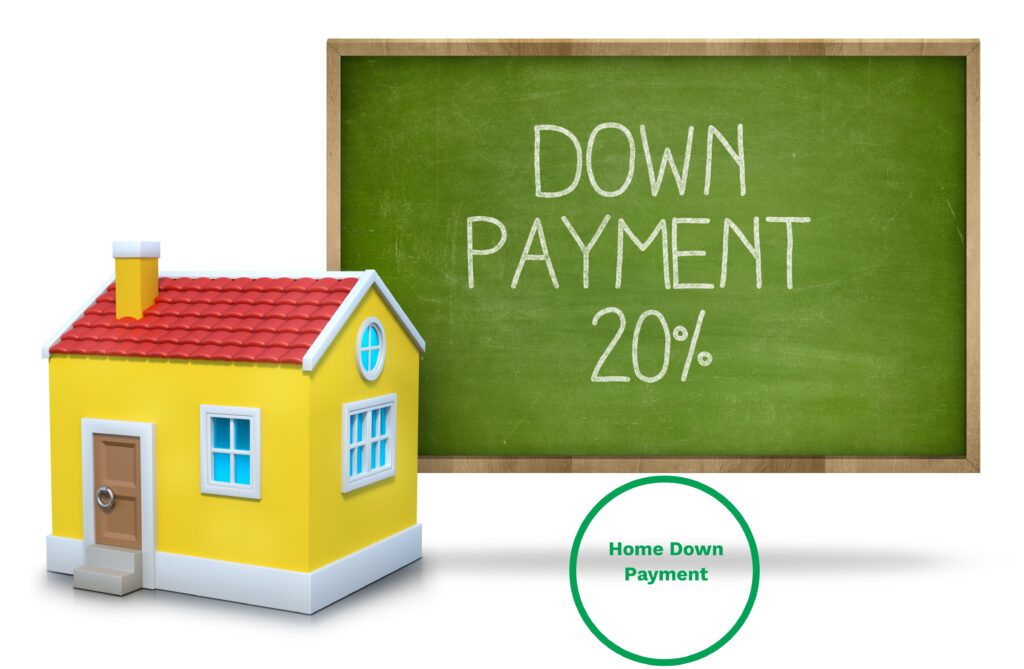Ask Brian is a weekly column by Real Estate Expert Brian Kline. If you have questions on real estate investing, DIY, home buying/selling, or other housing inquiries please email your questions to [email protected].
Question from April in Raleigh NC: Hello Brian. I’ve heard of the 20% down payment rule, but I also understand this is mostly a myth because most people have a much smaller down payment. But it does leave me with a couple of questions. Where does the 20% down payment rule come from? Is buying a home with less than 20% down wise?

Answer: Hello April. A slightly different version of your question might be more helpful. I suggest asking, “When does it make sense to put less than 20% down on a home?” But I’ll start with your first question about where the 20% rule comes from?
April, you’re correct that the 20% down rule is a myth. However, it is pretty much a rule if you want to avoid private mortgage insurance (PMI) on a conventional loan. There are a few things to know about PMI. First, it is not cheap. The amount varies but is typically between 0.5% – 1% of your loan amount per year. On a $300,000 mortgage that amounts to between an extra $1,500 – $3,000 each year. The second major point to understand is that PMI is NOT insurance for the homeowner. It is insurance for the mortgage company. It protects your lender if you stop making payments on your loan. But it does nothing to prevent foreclosure or to protect your credit rating if you stop making the mortgage payments. As a homeowner, you are paying for something that has no benefit for you other than allowing you to qualify for a mortgage with less than a 20% down payment.
That is the main reason why it makes sense for a 20% down payment but there are others. The other reasons don’t have to be the full 20% but the benefits increase as the amount of the down payment increases. To start with, the higher the down payment, the lower your loan-to-value ratio (LTV). This is a key ratio for lenders because it lowers their risk for making the loan. The lower risk can mean a lower interest rate for the home buyer and possibly avoid some other fees that show up at closing.
That same lower LTV is going to make it financially easier on the home buyer after the purchase is completed. A lower LTV means the buyer has more cash left over to spend on other things each month after the mortgage payment is made. That is because the monthly mortgage payment will be less when less money is borrowed.
Another time a larger down payment is helpful is if there is a bidding war. This starts when the seller is first considering the offer. A larger down payment strengthens your offer because it assures the seller that you're on solid financial ground and your financing is likely to go through. And it goes further in a bidding war if the appraisal is for less than the sale’s price. Lenders will not approve a loan for more than the appraised value. But the buyer can still pay more than the appraisal if they have the cash. The higher the down payment, the more cash the buyer is bringing to the deal. It’s possible that the down payment will cover the sale’s price amount that is above the appraised amount. The lender can still approve the loan if the loan is for less than the appraisal.
So April, the 20% down rule only applies if you want to avoid the PMI on a conventional loan. However, there are several very good reasons to make a large down payment. Typically, people that already own a home and will be using the equity that they have in that home as a down payment on a new home. Second time buyers often make a 20% or larger down payment on the new home. It’s first-time buyers that typically have a down payment of less than 20%. In fact, most people do not put down 20%. According to a 2021 National Association of Realtors report, 52% of mortgage borrowers put down less than 20%. When it came to first-time buyers, that number jumped to a whopping 74%. Here are some of the most common reasons why home buyers put down less than 20%.
Yes, April, a 20% down payment is a myth. But now you understand the common reasons when it is smart financially and when a smaller down payment makes more financial sense. Here are the general down payment rules that you should know about for the most common mortgages:
It all comes down to personal situations. Sometimes it does make sense to put down 20% but for others, it makes better sense to make a smaller down payment.
What can you add to the reasons to make a 20% down payment or to make a smaller down payment? Please share with a comment.
Our weekly Ask Brian column welcomes questions from readers of all experience levels with residential real estate. Please email your questions or inquiries to [email protected].